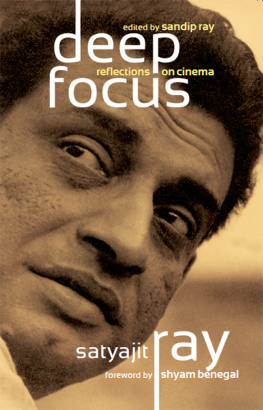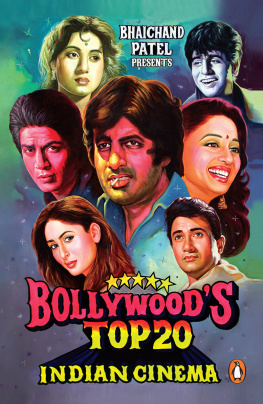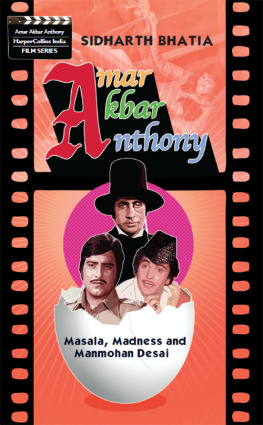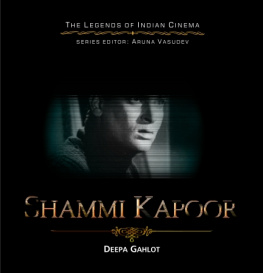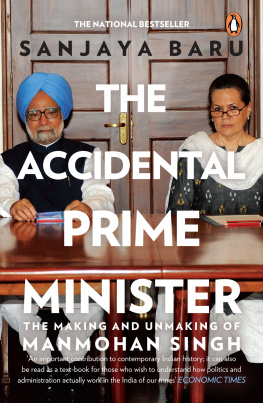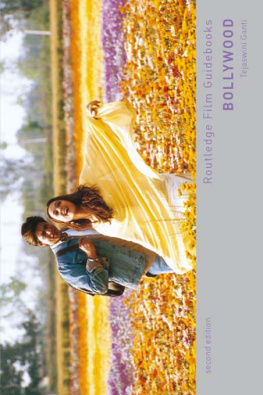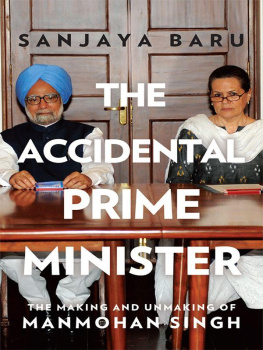About the book
Anhonee ko honee karna hamara kaam hai .'(It is our job to make the impossible possible.) The sentence leading into the title song of the blockbuster film Amar Akbar Anthony sums up the magic of Manmohan Desai, the master entertainer whose desire to please his public made his name synonymous with success during much of his career in popular Hindi cinema from 1960 to 1988. In Enchantment of the Mind : Manmohan Desai's Films, Connie Haham delves into the director's work and analyses some of his cinematic signatures - speed, fun, adventure and delight, alongside a devotion to motherhood and a stance in favour of inter-religious harmony. His cinema is fondly remembered for its many catchy tunes and the characters brought to life by leading stars, from Raj Kapoor to Amitabh Bachchan. Lending extra magic to this book is Manmohan Desai's own account of a life dedicated to cinema - a medium he wielded artfully to depict both struggle and an affirmation of life.
About the author
Connie Haham encountered Indian cinema in Paris in 1979. Since then, she has written on Hindi popular cinema for magazines and newspapers in India, France and the United States. Fascinated by Manmohan Desai's films, she decided in the early 1980s to get to the root of their ever-lasting appeal. In 1985, when the Pesaro Film Festival in Italy showcased Indian cinema, she was invited to speak on Manmohan Desai. In 1987, she was a consultant for the Miracle Man, a programme that appeared in the Movie Mahal series, directed by Nasreen Munni Kabir for Channel 4 in Great Britain. Haham has also written and spoken on the dialogues of the writing team Salim-Javed. She has taught English as a foreign language in Paris, France and Austin, Texas. Currently she divides her time between Paris and Austin, with regular dips into the enchanting world of Hindi cinema.
ROLI BOOKS
This digital edition published in 2014
First published in 2006 by
The Lotus Collection
An Imprint of Roli Books Pvt. Ltd
M-75, Greater Kailash- II Market
New Delhi 110 048
Phone: ++91 (011) 40682000
Email: info@rolibooks.com
Website: www.rolibooks.com
Copyright Connie Haham, 2006
All rights reserved.
No part of this publication may be reproduced, transmitted, or stored in a retrieval system, in any form or by any means, whether electronic, mechanical, print reproduction, recording or otherwise, without the prior permission of Roli Books. Any unauthorized distribution of this e-book may be considered a direct infringement of copyright and those responsible may be liable in law accordingly.
Cover Design: Aarti Subramanium
eISBN: 978-93-5194-049-4
All rights reserved.
This e-book is sold subject to the condition that it shall not, by way of trade or otherwise, be lent, resold, hired out, or otherwise circulated, without the publishers prior consent, in any form or cover other than that in which it is published.
enchantment of the mind
manmohan
desais films
contents
foreword
C learly, the re-assessment and insightful commentary on Manmohan Desai was long overdue. After all, his films stemmed from a concern with the way people live together and how this co-existence could perhaps even come close to a state of utopia. At the heart of Manmohan Desais immense oeuvre was an affirmation and celebration of struggle.
Manji, as he was called by those who loved and admired him, would perhaps balk at any cerebral analysis or research about his films. Without knowing itlike all great masterseffortlessly he had posited significant sub-texts into his hyper-fantasies, which to the superficial eye seemed like fleeting, will-o-the-wisp entertainers.
Somewhere within, he was quite prescient about the fact that his films, as a collective whole, would be ultimately accorded their just estimation by the critics, thinkers and academicians. Laugh at me today, he would tell his detractors good-naturedly, but mark my words, youll appreciate my work some day, even if its too late.
Its never too late. Indeed its a matter of personal pride for me that at long last, Manmohan Desai has been given his richly deserved stature in the pantheon of film greats.
In film after film, he had set his own rules of right conduct, a fierce sense of loyalty towards fellow-beings and above all, a deep veneration of the mother figure. At a time, around the 1970s, when families all over the world were splintering and it had become fashionable for young people to go independent, he insisted that parents came above God and of course, above self. Hurt them and you hurt yourself, was his simple, oft-repeated credo which continues to echo in the techno-savvy cinema of today.
Needless to say, Manji has been frequently imitated but never quite equalled. Not by a long shot. Because part of the distinctive drive and brio of his work came from his instinctive belief that films are a temporal as well as a spatial medium. He loved flamboyant colour, costume, and dcor, but he never allowed these elements to freeze into static compositions. A genius of changing patterns and complex movements, he filled his pictures with swooping crane shots, voluptuous displays of story telling, dance-music-action, superbly colloquial dialogue and spontaneously orchestrated background detailing.
Stylistically and thematically, Manmohan Desais films might be described as fantasticated expressions of romantic idealism. In fact, love, honour, separation, vindication and reunion were his abiding obsessions. While recounting those deceptively believe-it-or-not stories, he retained that key element of wonderment. He was akin to a child who had lost himself in a fairground, had clambered onto a Ferris wheel and could have enjoyed the ride till kingdom come. He never betrayed the slightest sign of exhaustion; he continued to be an irrepressible ranconteur even when a chronic backache confined him to a hardboard chair.
The diverse personalities of the dramatic director and the extravagant producer coalesced in Manji. His films generally took place in scenic outdoor locations or in studio-manufactured settings, where the boundaries between fantasy and everyday life could be transgressed.
Maybe it was the shortsightedness of the film commentators of the time that drew the simplistic comment that his work was absurd, far-fetched, incredible and unreal. Compared to the inter-planetary adventures of Steven Spielberg and George Lucas, Manmohan Desais foreverland was as familiar and as authentic as the people living next door. See, people praise Spielbergs imagination but have problems with mine, he would declare with bemusement.
Rationalists quibbled but audiences adored him. They wanted more. The criticism that Manji belted out films which were so fast, furious and funky that the viewers were not allowed any time to think, just doesnt hold any water today. The fact is that several of his films Sachaa Jhutha, Aa Gale Lag Jaa, Amar Akbar Anthony, Naseeb and Coolie to name a fewhave achieved cult status, constantly inviting thought, discussion, and most hearteningly, hosannas of approval.
Any list of films which have advocated secularism is now topped by Amar Akbar Anthony. When it was released, its full-throttle message of communal harmony wasnt perceived, but it is acknowledged unconditionally today. True to his nature, Manmohan Desai never spoke about his films agenda because he didnt have to.
Stories came to him naturally, inspired infallibly by the conditions and people around him. Anthony was a drunken lout he had encountered oftentimes in the back alleys of Khetwadi, a cramped city area where Manmohan Desai felt completely at home. No wonder, he retreated back to the congestion and the crowds after shifting for a short while to the upscale Malabar Hill.
Next page

